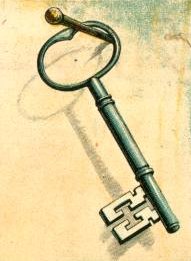I’ve been wrestling with a new manuscript lately, and the first issue was this: do I tell the story in first or third person?
It led to a pretty big case of writer’s block, so I called a trusted advisor and we processed it a little bit. Wrestled the block together. I didn’t have a definitive answer when I hung up the phone, but I had a new way of looking at the situation.
If you feel stuck when writing today, process it. Talk to somebody about it.
I think of it as the Rule of Two. You type with two hands, so why not get two heads involved in the writing process on occasion? I’ve found that people are pretty nice about this. Every time I think I’m imposing, I actually find people quite willing to help. It’s not about sharing credit or stealing ideas. Rather, it’s about bringing stuck points into the light of day so that others can give us a new way of looking at the situation.
Sometimes it’s a simple word-choice problem. Sometimes it’s a plot point that can change your character’s destiny. No matter how small or large the stakes, getting another opinion can work wonders.
See, that’s the paradox of writing: it’s a solitary pursuit often made better by sharing with others.
You don’t need to share with a great literary critic or famous author. Talk it out with your dog. Call you mom and try to describe the scene you’re struggling with. Meet a friend, buy him a coffee, and bounce some ideas. Find a writing blog and ask for help from the community in the comments section.
It’s about opening up. It’s about letting some light in through the oft-closed door of the mind. It’s about seeing the elements of your creation through someone else’s eyes if you’re mired in writer’s block or too close to make the call.
The rule of two, folks. Doesn’t work for everyone, but I’ve found it quite helpful in life and writing.
Just my two cents.
How do you get unstuck?




